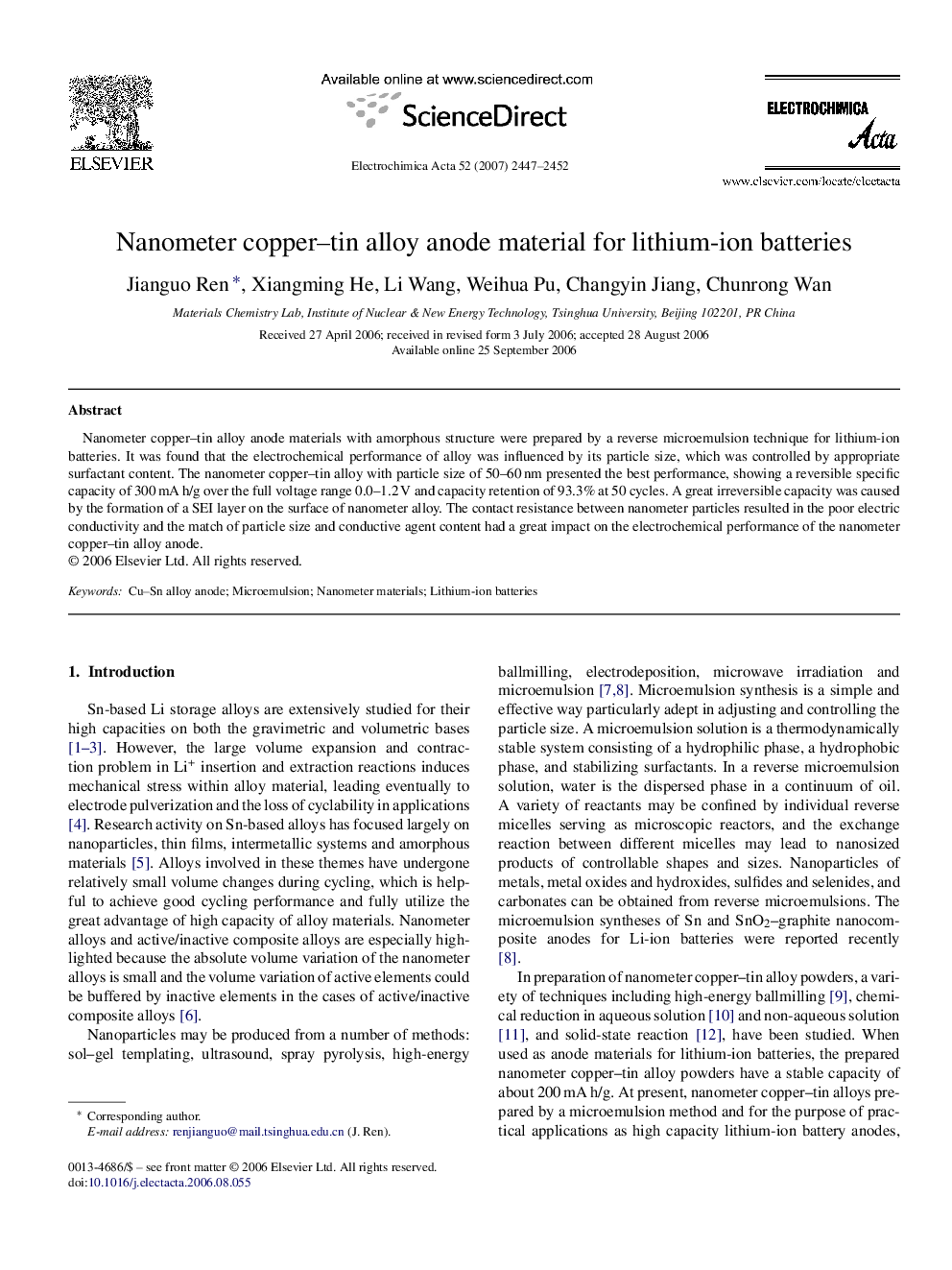| Article ID | Journal | Published Year | Pages | File Type |
|---|---|---|---|---|
| 194892 | Electrochimica Acta | 2007 | 6 Pages |
Nanometer copper–tin alloy anode materials with amorphous structure were prepared by a reverse microemulsion technique for lithium-ion batteries. It was found that the electrochemical performance of alloy was influenced by its particle size, which was controlled by appropriate surfactant content. The nanometer copper–tin alloy with particle size of 50–60 nm presented the best performance, showing a reversible specific capacity of 300 mA h/g over the full voltage range 0.0–1.2 V and capacity retention of 93.3% at 50 cycles. A great irreversible capacity was caused by the formation of a SEI layer on the surface of nanometer alloy. The contact resistance between nanometer particles resulted in the poor electric conductivity and the match of particle size and conductive agent content had a great impact on the electrochemical performance of the nanometer copper–tin alloy anode.
